A trip to South Australia’s Ikara-Flinders Ranges lived up to expectations for Pam Temby.
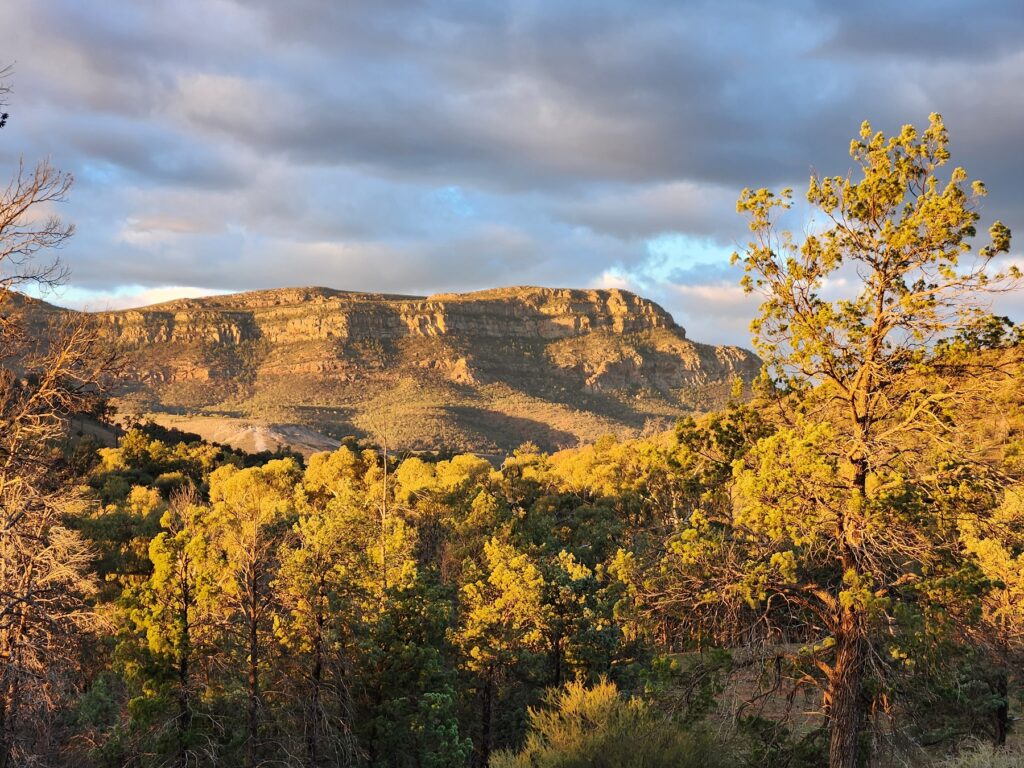
I have travelled many roads in the green and forested southeastern part of our country, but I had yet to experience outback and semi-arid parts of our country. The Ikara-Flinders Ranges was on the bucket list and when a travel window of three weeks in winter appeared, it gave myself and my partner the perfect opportunity to couple up our rig, our 13 foot all terrain caravan, and head north from Melbourne via Mildura, Renmark and due north to the Ikara-Flinders Ranges National Park.
The Ikara-Flinders Ranges are approximately 430 kilometres from Adelaide and around 1,150 kilometres from Melbourne. The park itself is over 95,000 hectares and stretches 430 kilometres north / south, so there is a lot to explore.
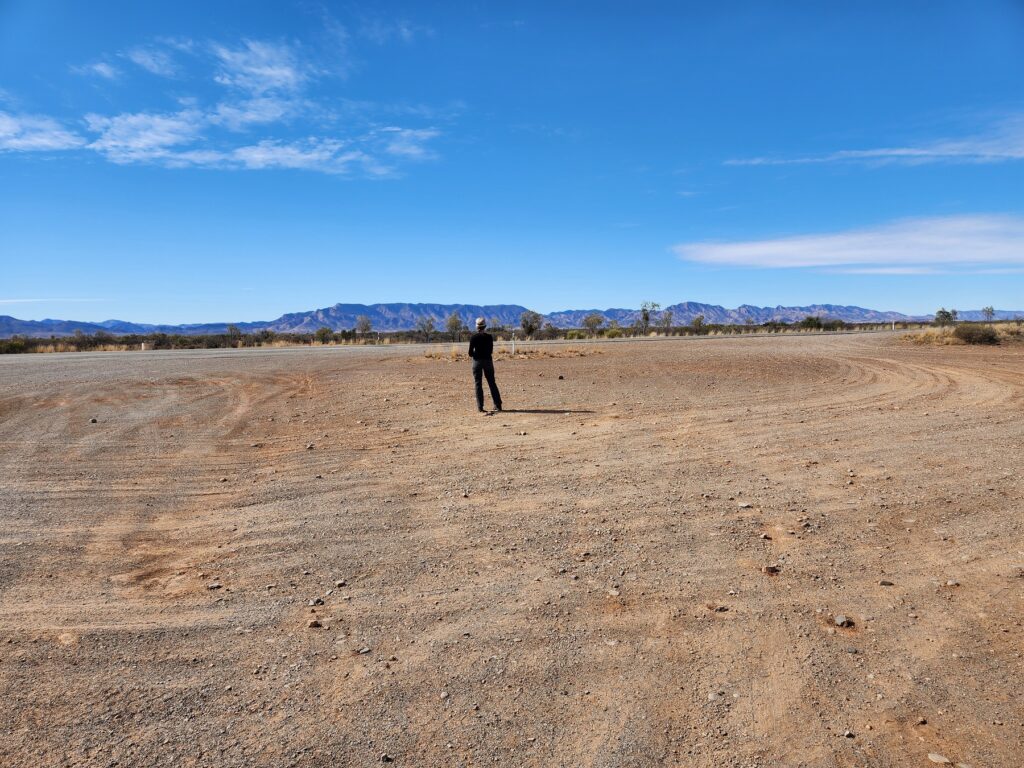
The traditional custodians of the land are the Adnyamathanha, (the hills or rock people). The meaning of Ikara is “meeting place” in the Adnyamathanha language, referring to the iconic Wilpena Pound, a sacred site for the Traditional Owners, located in the Ikara – Flinders Ranges National Park.
As we approached the southern end of the Ranges (with a tinge of green after good rains) and the after two leisurely travel days, it was a breathtaking sight. Here I was!
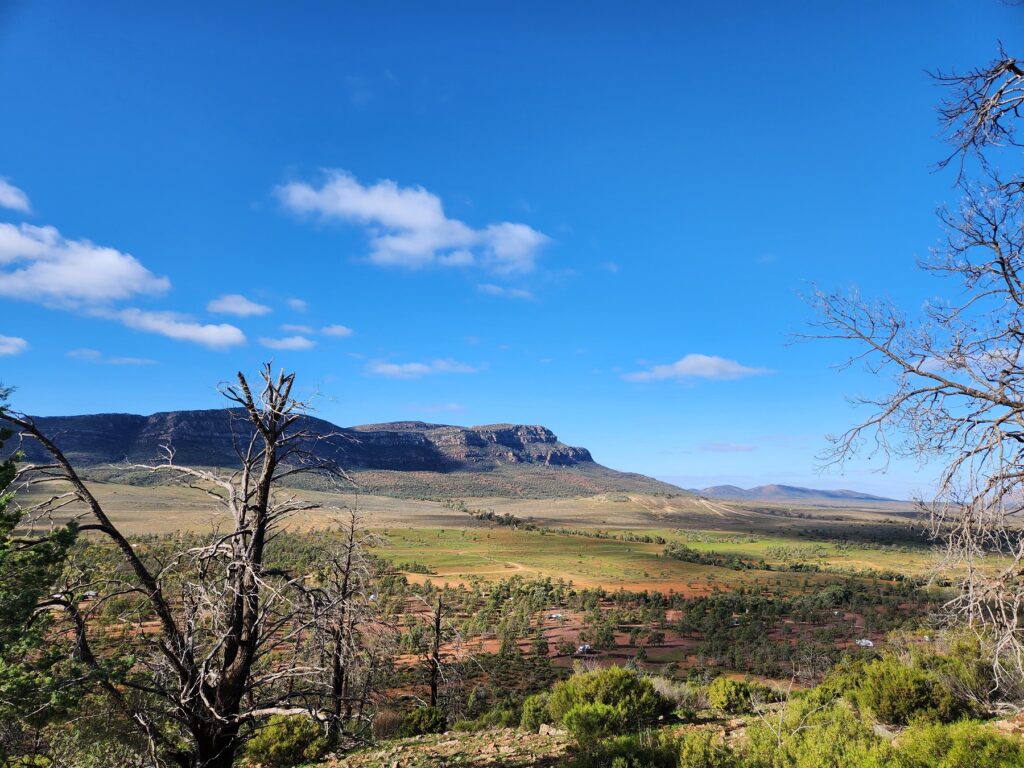
Rawnsley Park Station Campground was our base to explore the Park. Rawnsley Park is a 20-minute drive on a sealed road to the iconic Wilpena Pound. Wilpena is where the main National Park campground and the National Park Information Centre are located.
Rawnsley Park was established in the mid 1800’s for grazing and wheat. In the 1950’s, as a sideline to grazing, tourism took off in the Ranges with several stations opening up to visitors for sheep shearing demonstrations and simple cabin accommodation, Rawnsley being one of them. Tourism is now a major enterprise at Rawnsley with a range of accommodation options and activities on the 29,000-hectare Station.
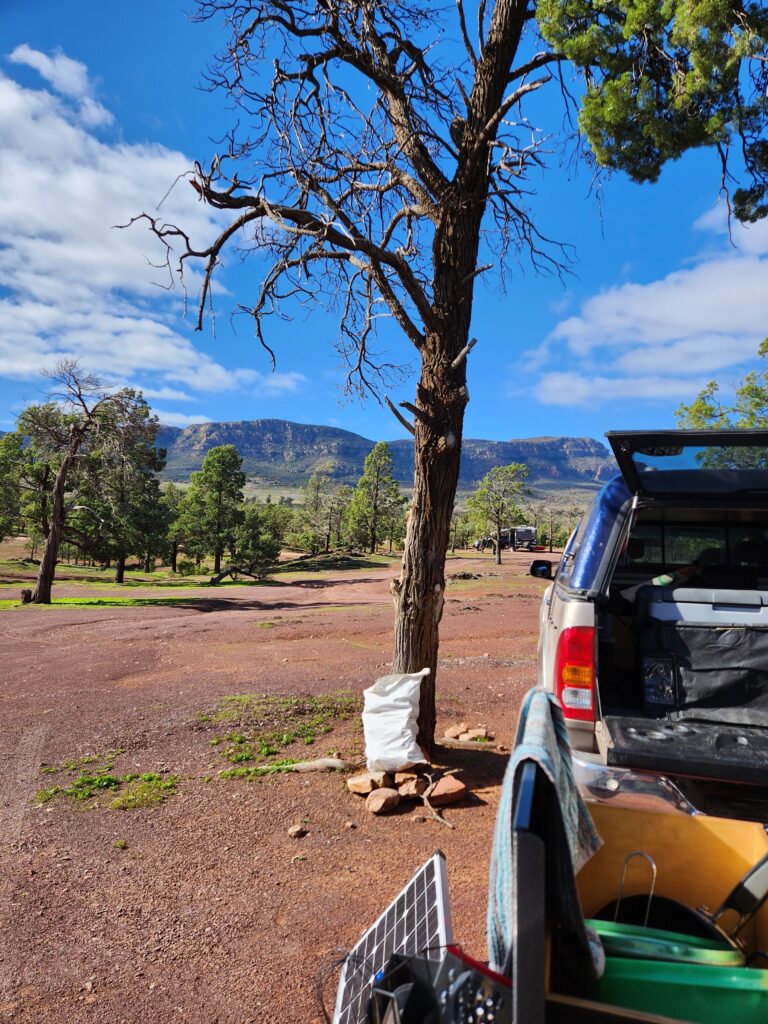
The Station is located just outside the National Park and is dog friendly. Accommodation options include eco villas, holiday units, the Homestead and a caravan and campground with powered sites and an incredibly vast unpowered/bush camp area, where we chose to set up camp.
Our site had spectacular views of the red rock giants; Rawnsley Bluff and Red Terrace to the north and the Chace Ranges to the east. As the sun rose and set each day we were treated to the Ranges ablaze with pinks, reds and oranges. It was everything I was expecting and more! The days were gloriously sunny but as we travelled mid-winter, it was cold at night. Be sure to pack warmly if you visit in the colder months!
My partner has a dodgy knee, so big walks together were out of the question for this trip. Rawnsley Park was the perfect solution. The Station offers a range of activities including self-drive 4WD tours, walking tracks from easy to difficult, bike tracks, guided walking tours and 4WD tours and flights over The Flinders Ranges and Lake Eyre from the Station’s airfield.
The self-guided 4WD tours, bike tracks (for us) and the Station walking tracks (for me) were a winner, and for added value, fabulous pocket-sized detailed maps are available.
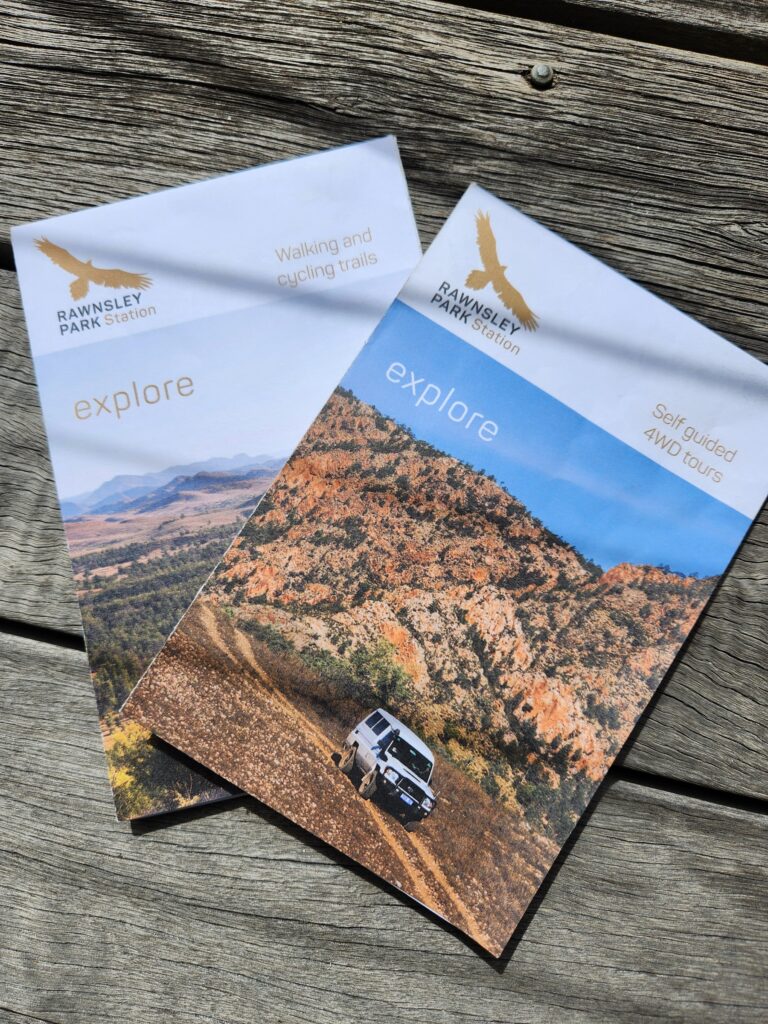
Day one we drove to the National Park office in Wilpena for a few more maps, day drive suggestions and our vehicle entry pass. The National Park customer service officers can help you with local accommodation and camping, self-drive or guided trips, tours, walks and unique Adnyamathanha guided tours of the area.
We took the scenic drive from Wilpena to Bunyeroo Gorge and Brachina Gorge. What an amazing and varied day trip it was through green tinged semi-arid plains, after good rain a few weeks prior, and into breathtaking geologically significant rocky gorges. Travelling through the steep gorges was spectacular, with the unpaved road taking us partly through wide, dry riverbeds.
We learnt from various information boards that Ikara is one of the oldest mountain ranges in the world and was formed over 600 million years ago. It is the only place on earth where 350 million years of near-continuous geological sequence can be seen, demonstrating the rise of a habitable planet and the dawn of animal life. We were suitably impressed!
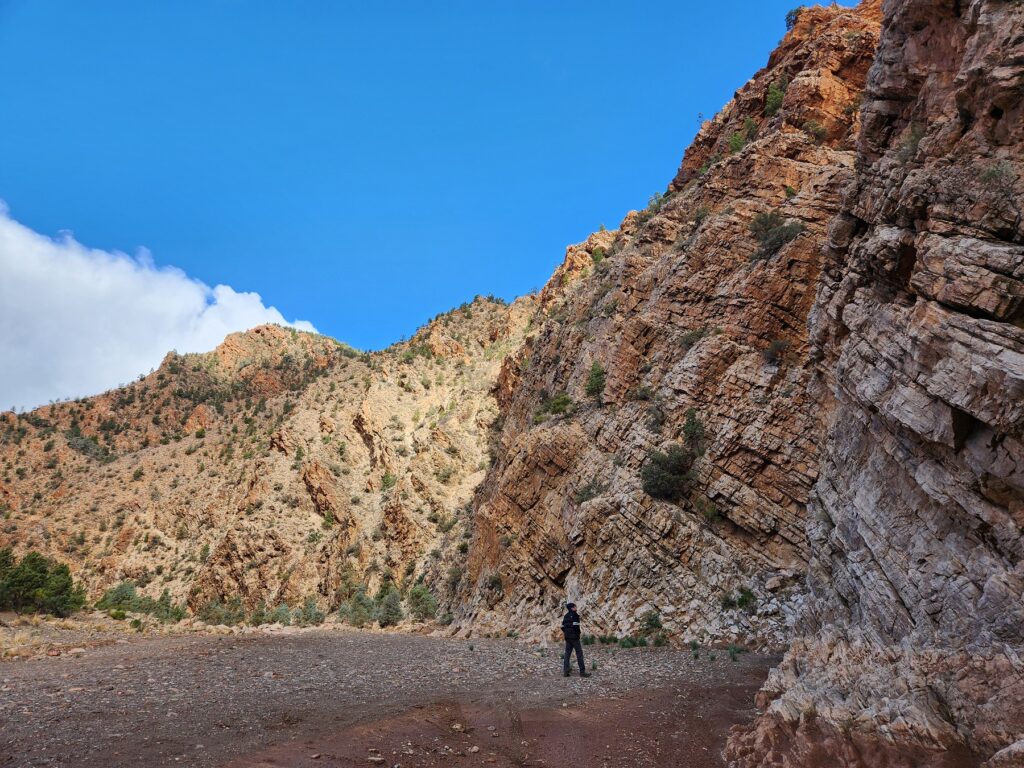
The Outback Highway and the Flinders Ranges Highway flank the Ranges on the west and eastern sides of the ranges. Secondary sealed and unsealed roads run through the National Park offering many scenic routes, accessible to most vehicles. We travelled in a 4WD and found the National Parks roads we drove in good condition, but best to check with the National Park office at Wilpena first. We learnt that conditions could change drastically, especially when it rains.
Day two we set off on our Rawnsley Station self-drive 4WD tour. Rawnsley provided us with a detailed map and with a payment of $60 we received keys to two gates giving us access to the station tracks including a challenging and very exciting low-gear/high-clearance track. What a fun day it was! We took our time, our lunch for a full adventurous day out on the red dusty rocky roads with plenty of “oooh” and “aaaah” moments! A downside was we forgot our travel stove to heat up our coffee. No need to panic! Seasoned campers we built a little protected fire, and our coffee was soon happily percolating.
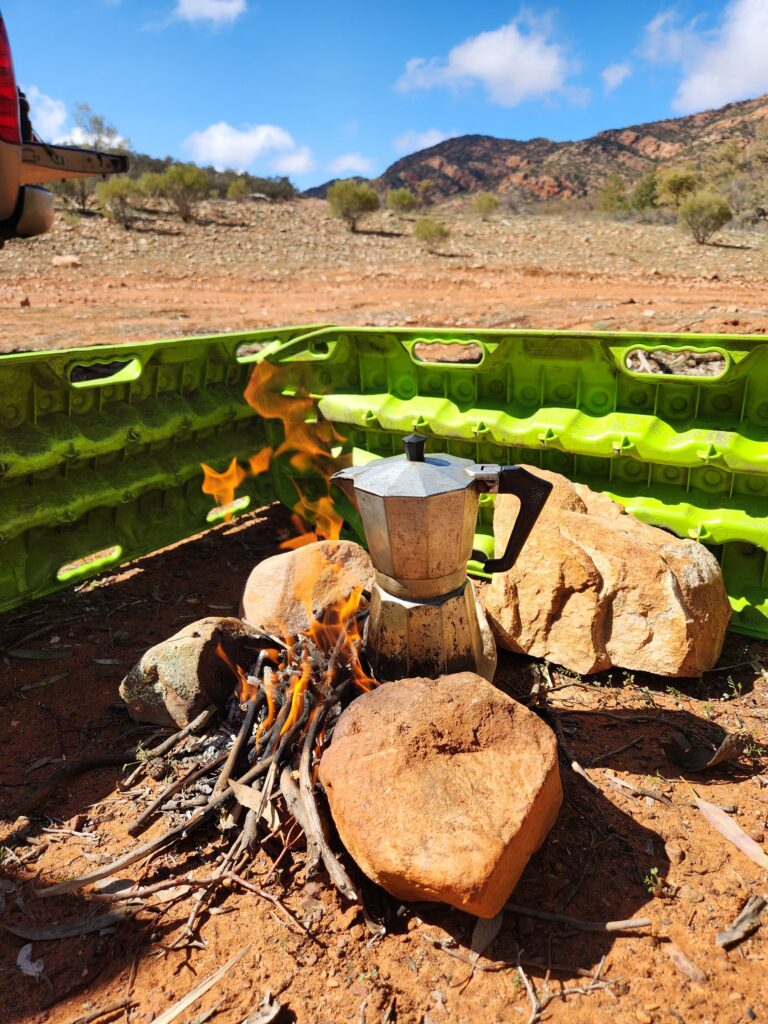
As mentioned, one of Rawnsley’s attractions is the very well-marked walking and off-road cycling tracks on the property. I had already walked three of the more moderate walks, which conveniently set off directly in front of our camp site! On these walks I spotted Euros, a very cute stocky furry red and beige kangaroo native to the area.
My partner cycled a couple of the tracks, albeit gingerly, on the e-bike we travelled with to help him get out and about a bit.
After a few moderate walks, I decided to take on a more challenging 5 hour walk to the Wilpena Pound Lookout and Rawnsley’s Bluff. The walk started a mere 3-minute drive from our campsite on a cloudless day. It was challenging, steep and rocky but I was amongst friends – three school groups and handful of walkers. We were rewarded with yet more breathtaking views across Wilpena Pound and surrounding ranges, a pair of wedgetail eagles cruising on the breeze overhead and huge sense of achievement.
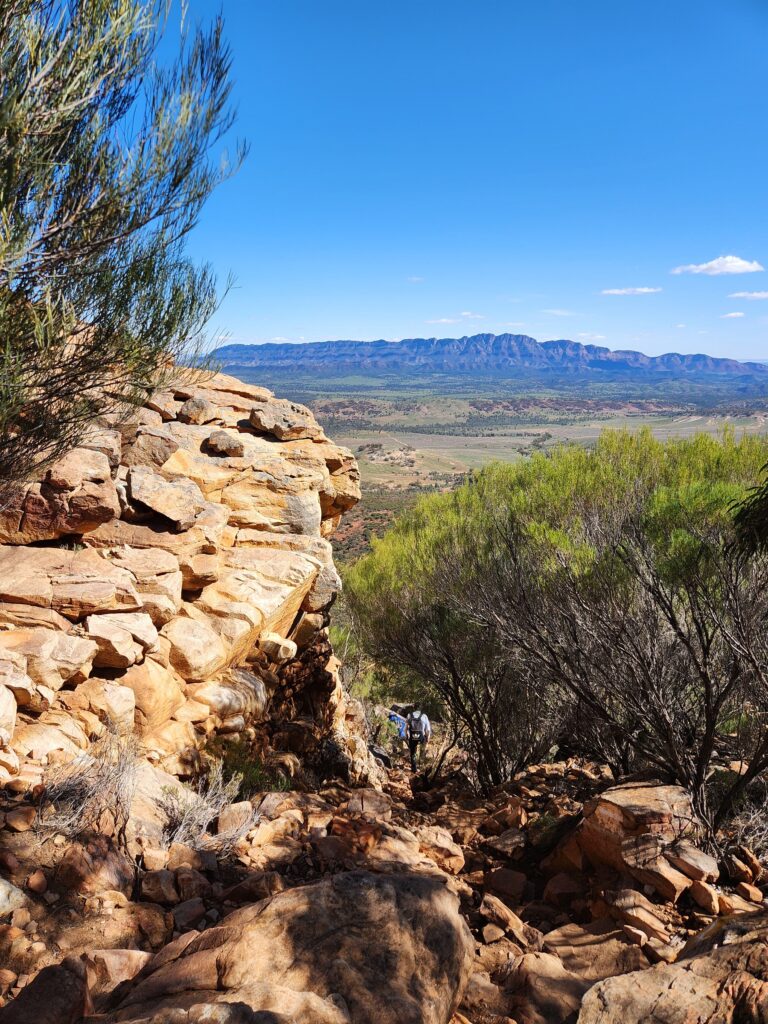
When it was time to move on from Rawnsley, we headed further north along the Flinders Ranges Highway via Blinman and the Parachilna Gorge Road for our last leg of the Ikara trip. This was yet another spectacular drive with majestic vistas with plenty to see including a stop at historic Blinman (population 50) where copper was discovered in 1859. After a cold drink at the wonderfully paired back outback pub, we continued our journey onto a free camp site on a dry riverbed on the Parachilna Gorge Road where there are free camps a’plenty.
The light at the river bed camp site was next level. The way it changed and played on the bluffs and gorges at different times of day is, as they say, “painterly”. No wonder artists including the famous landscape artist Hans Heysen OBE fell in love with capturing the evocative landscape, dry creek beds and mighty River Red Gums. The artist’s association with the area is honored in a 1200-kilometre walking trail which includes a section through the Ranges.
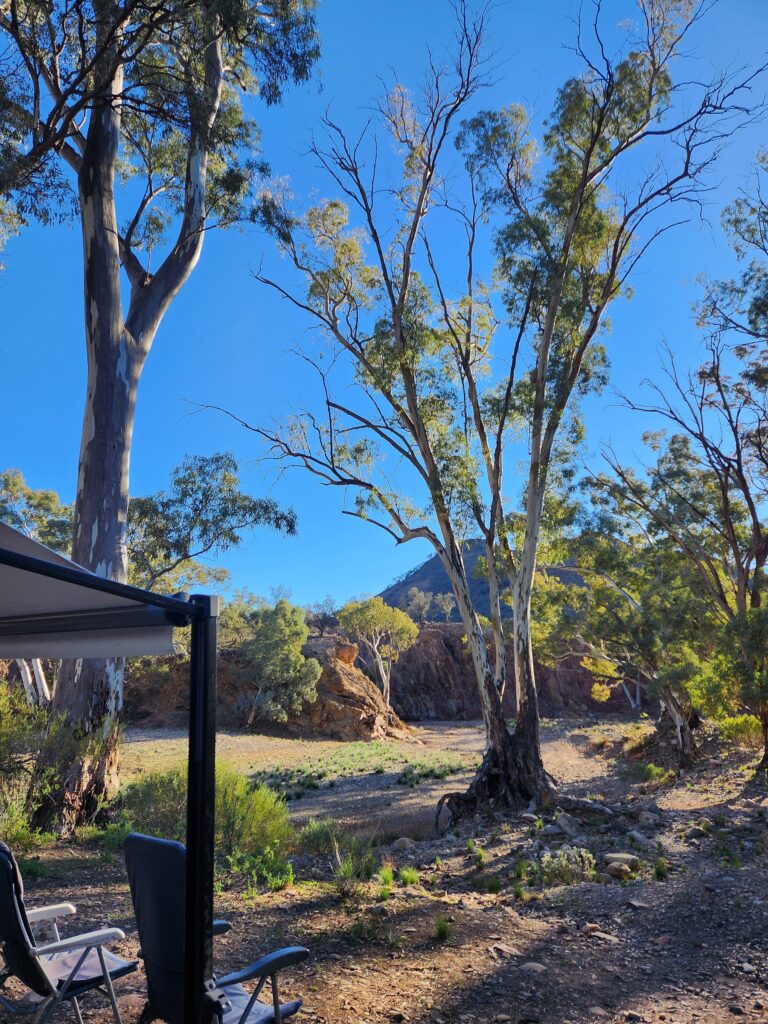
What I had imagined of our arid interior prior to this trip had only been informed by photos and documentaries. As my many years of camping had been in forests, by flowing rivers and on the coastline, nothing really prepared me for the actual sense of solidness, stoicism, harshness and brutal beauty of this landscape. We are incredibly lucky to live in Australia, a land of such diverse landscape, geology, flora and fauna.
I think it was on the drive to Parachilna Gorge, I fully fell for the red dirt, barren and rocky landscape and scrubby and tough flora and fauna. I felt a deep new respect for our ancient, rugged land and the Traditional Owners who have lived in this country of extremes for over 60,000 years.
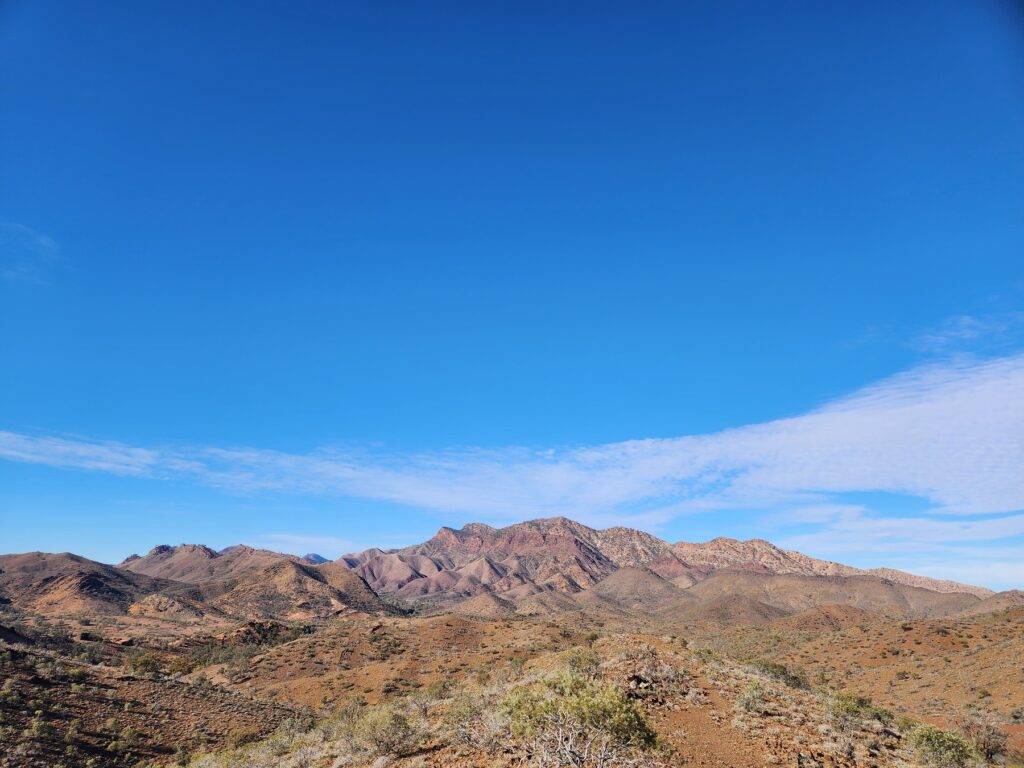
The Ikara – Flinders Ranges is a travellers’ paradise with every accommodation and adventure option you could ask for. You can stay in the National Park itself, but there are many options outside the Park too. Co-management of the Ikara-Flinders Ranges National Park involves a partnership between the Government of South Australia and the Adnyamathanha people.
Trip details:
* Unpowered site per night: $34 per night for two people
* Self-Drive 4WD: $60
* Walking and cycling: Free
Ikara-Flinders Ranges National Park
* Vehicle Day Entry $13.90 per vehicle
Accommodation Ikara- Flinders Ranges
Hans Heysen Walking Trail
heysentrail.asn.au/heysen-trail
The Hans Heysen walking trail can be joined at any point for short, half or full day walks.
- Flinders Ranges, south australia, travel
Subscribe My Newsletter
Unsubscribe at any time.




